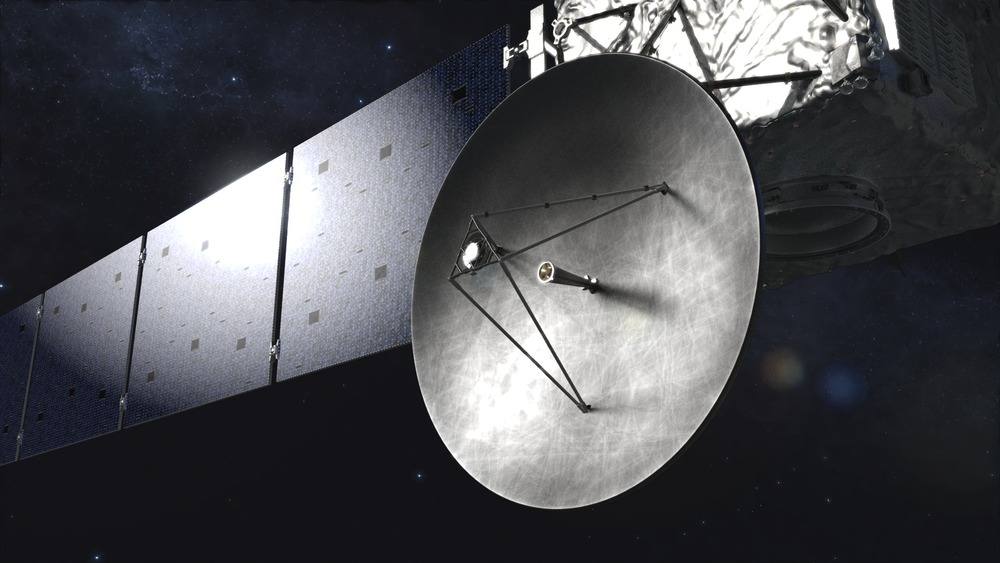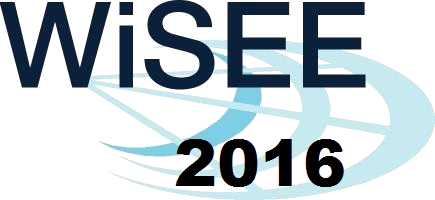

Important Dates
- Submission deadline special sessions: April 1, 2016
- Submission deadline full papers and posters: June 15, 2016
- Notification of acceptance: July 4, 2016
- IEEE PDF eXpress version due: July 21, 2016
- Submission deadline for the workshop on Space Solar Power (SSP): July 20, 2016
Areas of Particular Interest
Full length Research Papers (6 pages) and Poster abstracts (3 pages) are sought that address solutions to problems in all areas of wireless sensing and communication in space and extreme environments related to spaceflight, including but not limited to the following:
- Wireless sensors, systems, and networks
- Delay and disruption tolerant networks
- Network architectures, middleware integration, and data management
- Big data processing and data fusion techniques
- Wireless privacy, security and routing techniques
- Localization, detection, classification and tracking methods
- Antenna design and processing
- Integrated vehicle systems and robotics
- RFID devices and systems
- Propagation modeling and channel description
- Optical communication systems
- Availability, certification, and spaceflight qualification for wireless devices and systems
- Multi-carrier systems, spread spectrum techniques, Cognitive radio networks, and emerging technologies
- High speed, low latency, and multi stream data techniques (Full-duplex, LTE, MIMO)
Submission Guidelines
All paper submissions are through the same online system. Make sure to select your desired workshop or main conference during submission. Acceptance will be based on full papers and poster abstracts. Accepted and presented papers will be published in the conference proceedings and submitted to IEEE Xplore as well as other indexing databases. Please also ensure that all details, like all authors in the right order, and the paper title are included in EDAS database properly, as those data will be used to generate conference program and the table of contents for the proceedings. It is not sufficient to include just one author, or if you amend the title there is a need to change it in the database.
Poster abstracts are reviewed for quality and relevance with the same standards as full papers. Each poster summary needs to be prepared with IEEE standard conference templates. Each accepted poster may be made on paper with sizes between 2×3 to 3×4 sqft rectangles to fit on the poster board. Registered/presenting authors need to bring the printed poster to the conference venue. Poster boards and pins will be provided.
- Papers and abstracts of posters must be written in English and prepared in Portable Document Format (PDF).
- Papers and abstracts of posters must be formatted according to the standard IEEE two-column format with single-spaced, ten-point font text, as given in the IEEE templates.
- The maximum length of papers and abstracts of posters is six (6) and three (3) pages, respectively.
- All figures, tables, references etc. are included in the page limit.
- All fonts must be embedded into the PDF file.
- All papers and abstracts of posters must be submitted via EDAS.
In addition to the full length research papers and poster abstracts, the workshops will also accept presentation only formats without inclusion in IEEE Xplore package. The presentations/talks must be registered on EDAS and the presenter has to submitt a short abstract (about 1 page) of the talk before the regular paper submission deadline. Contact workshop chairs for more information.
IEEE tools for manuscript preparation may be found HERE.
Manuscript registration and submission can be found HERE.
Camera-ready paper submission instructions
All camera-ready versions must be prepared in English and with maximum page limit of six (6) pages (10-points font, A4 IEEE style). Standard IEEE conference paper templates for both LaTeX and Microsoft Word can be found HERE.
Please consider the following steps for properly submitting the final version of your paper.
-
Update/revise your accepted manuscript
Please make sure to read the reviews of your paper and take them into account for the final revision. Furthermore, make sure that your manuscript is double-checked for typos and language mistakes. -
Inclusion of the IEEE copyright clearance code
First, determine the IEEE copyright clearance code correctly which is relevant for your paper:- For papers in which all authors are employed by the US government, the copyright notice is: U.S. Government work not protected by U.S. copyright
- For papers in which all authors are employed by a Crown government (UK, Canada, and Australia), the copyright notice is: 978-1-5090-2609-8/16/$31.00 ©2016 Crown
- For papers in which all authors are employed by the European Union, the copyright notice is: 978-1-5090-2609-8/16/$31.00©2016 European Union
- For all other papers the copyright notice is: 978-1-5090-2609-8/16/$31.00 ©2016 IEEE
- MSWord users can use: ‘Insert’ -> ‘Text box’, and then insert the appropriate copyright notice into the textbox. Place the box at the bottom-left on the first page (the box border should be set to hidden/ invisible).
-
Latex users can include the following example lines just before the command \begin{document} (make sure to choose the correct copyright notice):
\IEEEoverridecommandlockouts \IEEEpubid{\makebox[\columnwidth]{ 978-1-5090-2609-8/16/\$31.00~\copyright~2016 IEEE \hfill}\hspace{\columnsep}\makebox[\columnwidth]{ }}
-
Compliance with IEEE Xplore PDF guidelines
Prior to final submission, you need to PDF-check your paper by using IEEE PDF eXpress, which is available on pdf-express.org. PDF eXpress allows you to check the compatibility of the PDF files with IEEE Xplore®, and also assists you in correcting problems with your files. The conference ID is 38011X.
First-time users should do the following:- Go to the link: pdf-express.org
- Select the link: New Users - Click Here
- Enter the conference ID, your email address, and choose a password
- Continue to enter information as prompted. An online confirmation will be displayed and an email confirmation will be sent verifying your account setup.
Once all errors are removed and the paper is compatible with the IEEE Xplore rules you will receive a finale camera-ready manuscript via email which can be uploaded after registration and the IEEE Copyright transfer. -
Registration
For inclusion of your received camera-ready manuscript in the conference proceeding (as well as the IEEE Xplore digital library) your paper must be presented on the conference. Therefore, at least one of the authors should register for the conference before the final manuscript deadline July 21, 2016. Please follow the registration instructions on our registration page which will be opened on July 3, 2016. -
Completion of the IEEE Copyright Transfer
The IEEE copyright transfer agreement must be submitted electronically via EDAS. Please login and go to your home page on EDAS to get access to the EDAS Conference and Journal Management System. Click on your accepted paper to see the corresponding configuration page. Click on the plus sign in front of the Copyright Form property. Then use the IEEE Copyright Submission button and follow all next steps to sign the copyright electronically. -
Upload the prepared camera-ready manuscript
Go to your accepted paper on EDAS, click on the upload sign in front of the Final Manuscript property to upload the received finale camera-ready manuscript.
Special Sessions and Tutorials
Proposals for tutorials and special sessions should provide a 200 word summary; for special sessions additionally the details of the invited papers.
